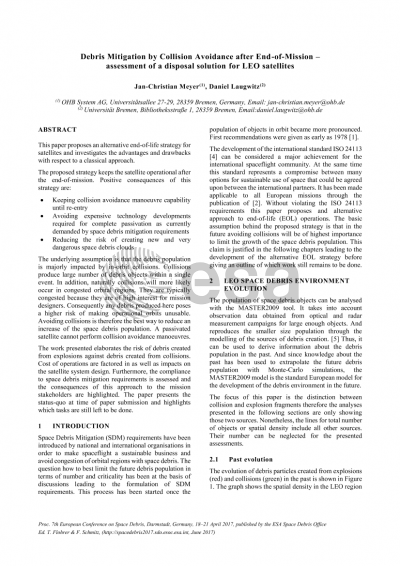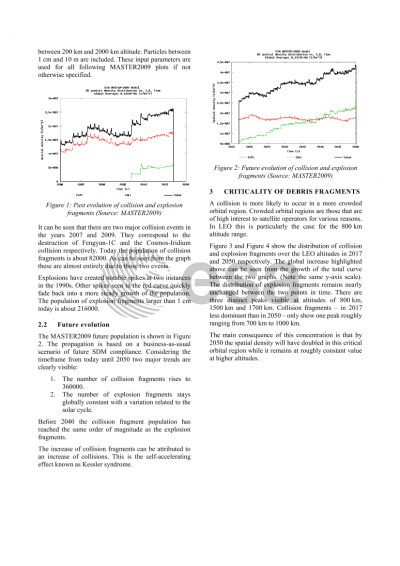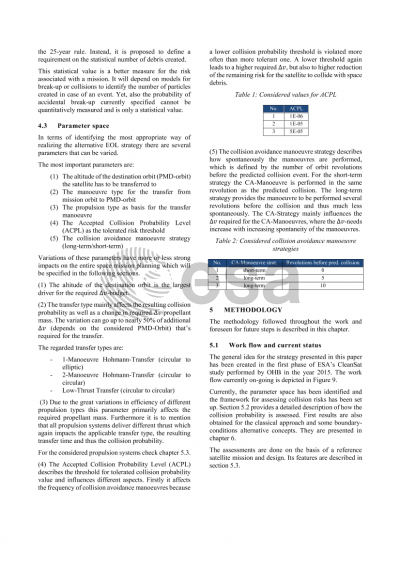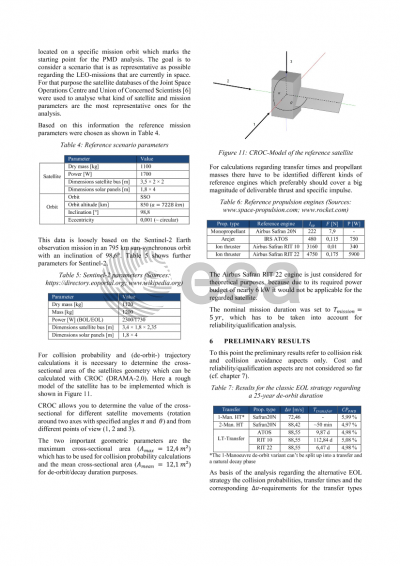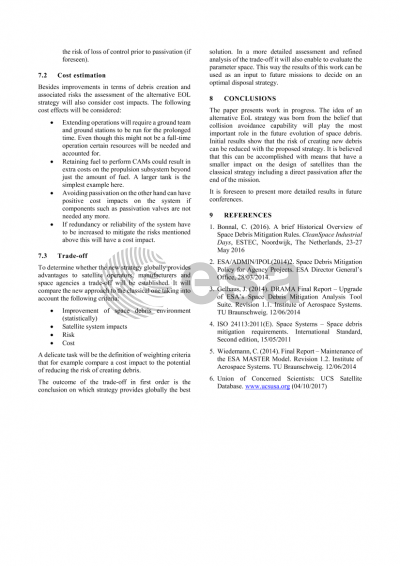Document details

Abstract
This paper proposes an alternative end-of-life strategy for satellites and investigates the advantages and drawbacks with respect to a classical approach.
The proposed strategy keeps the satellite operational after the end-of-mission. Positive consequences of this strategy are:
• Keeping collision avoidance manoeuvre capability until re-entry
• Avoiding expensive technology developments required for complete passivation as currently demanded by space debris mitigation requirements
• Reducing the risk of creating new and very dangerous space debris clouds
The underlying assumption is that the debris population is majorly impacted by in-orbit collisions. Collisions produce large number of debris objects within a single event. In addition, naturally collisions will more likely occur in congested orbital regions. They are typically congested because they are of high interest for mission designers. Consequently any debris produced here poses a higher risk of making operational orbits unusable. Avoiding collisions is therefore the best way to reduce an increase of the space debris population. A passivated satellite cannot perform collision avoidance manoeuvres.
The work presented elaborates the risk of debris created from explosions against debris created from collisions. Cost of operations are factored in as well as impacts on the satellite system design. Furthermore, the compliance to space debris mitigation requirements is assessed and the consequences of this approach to the mission stakeholders are highlighted.
Preview
